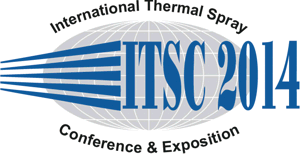
|
3897 |
|
Effect of deposition rates and deposition temperature on stress evolution of HVOF-sprayed coatings |
|
Alfredo Valarezo* / Universidad San Francisco de Quito,
Department of Mechanical Engineering.
& Stony Brook University, Center for Thermal Spray Research, Ecuador Kentaro Shinoda / Stony Brook University, USA Sanjay Sampath/ Stony Brook University, USA |
|
In this study, the effect of various process parameters that affect the deposition rate, and overall deposition temperature including: feed rate, raster speed, and external cooling are discussed in the context of their effect on the stress evolution in HVOF sprayed coatings. It was found that this dynamics of stress evolution and final residual stresses not only is a result of the deposition rate but more importantly a consequence of the deposition rate on the local deposition temperature (Tld ) at the location of impact. This local temperature here obtained by modeling has been found to play a significant role in the dynamics of residual stress buildup during deposition (named here, stress evolution or evolving stress). Processing variables in thermal spray (TS) HVOF such as gas chemistry, energy input, etc., have been typically controlled to affect the particle state: particle temperature and velocity. Here, instead, the process variables investigated are not intended to change the particle temperature or velocity but the deposition rate and Tld. These process variables are named as Deposition Temperature (DTE) parameters and their manipulation allow for control of residual stress states. The stress evolution during the deposition tends to be more tensile with increased Tld, and this tendency is more significant when the change in Tld is produced by the feed rate. Compressive stresses result for lower Tld due to dominance of the peening effect. A systematic study of these effects was conducted for gas fuel HVOF sprayed Ni and WC-Co coatings. The Ni coating represents the family of ductile metallic coatings, whereas the WC-Co illustrates the behavior of hard cermet coatings. Both materials develop compressive stress evolution at low Tld and change into tensile stress at high Tld by manipulation of deposition temperature parameters. Examples of various other materials and HVOF processes are presented to support the analysis. |